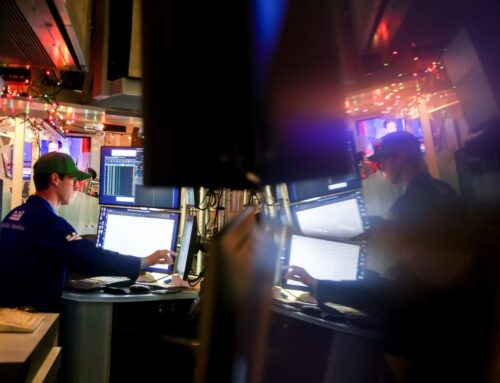The Industry Exodus Isn’t Just Bad for L.A. — It’s Hurting the Environment, Too
April 22, 2025
As Hollywood productions have relocated to Atlanta, London, Canada and other parts of the world due to favorable tax incentives, the environment also pays a price. Because although actors, directors and producers are traveling to these areas to film, they are not moving — instead frequently flying back to their homes in Los Angeles on weekends and days off and, as a result, increasing their carbon footprints.
Take Wendie Malick, who lives in Topanga Canyon and is currently shooting both Night Court and the third season of Shrinking on the Warner Bros. lot, while also filming a new Hallmark series in Vancouver for the next three months. “I’m going to be coming back probably every few weeks is my guess, both to honor my commitment to the other shows and also because my heart hurts when I’m gone for too long,” the actress and environmental activist says. “For those of us who have families and animals and kids who need to be able to come back and forth, there’s a lot of extra footprint going on here that I’m really sorry that I’m part of.”
Flying already has long been a part of Hollywood’s environmental impact, with the Sustainable Entertainment Alliance reporting in 2021 that 24 percent of average total carbon emissions from a tentpole film came from air travel — and that just accounts for the production’s travel, not the personal back-and-forth of talent on off days.
According to sustainability agency Earth Angel, if a production were to relocate from L.A. to Vancouver, for example, for a 20-week TV shoot with five people traveling business class each weekend and being put up in upscale accommodations, that would amount to 87.4 metric tons of CO2 for air travel and 16.5 metric tons for accommodations, for a total of 103.9 metric tons of added CO2 emissions. For comparison, according to the Center for Science Education, the average person produces about 16 tons of carbon dioxide each year in the U.S.
The agency also reports that in 2024, average air miles flown for L.A. longform productions were about 126,367 miles, versus a 2024 high-budget feature that opted for a different shooting location coming in at 1,364,775 miles.
While studios and streamers are saving big on moving their productions outside of L.A., Malick says she thinks the “environmental impact is not at the top of the list” when these decisions are being made: “I imagine it gets to the bottom line like so many things in this country; it’s all about, how do you squeeze the most out of this stuff and make the biggest profit for your shareholders?”
For those who do have to shoot away from home, there also are not many sustainable travel alternatives. Environmental icon Ed Begley Jr., who has had an electric car since 1970, says he used to drive to Albuquerque, New Mexico, to shoot Better Call Saul, but even he recognizes it’s often not possible to carve out enough time for a road trip.
“It’s a lot to go back and forth because people want to be with their families on Thanksgiving, they want to be with their families on weekends if they’ve got a long weekend or even a short weekend off. That’s something I try to avoid at all costs, but once in a while I’ve got to do it,” Begley says of flying. He adds that in deciding where to shoot a project, the air travel element “must be considered because you’re using a lot of CO2 to make that trek.”
There also are additional factors to leaving the green infrastructure of California, says Sustainable Entertainment Alliance executive director Sam Read, including how available electric cars and clean alternatives to diesel generators are to rent in these different locations. He also notes the possible issue of “having a workforce that is trained up and skilled on how to use them and how to approach using a battery system, as opposed to a diesel generator, and what that means for your production,” as these new technologies are introduced.
As a result, environmental activists in the entertainment community are joining in on the call to bring film and TV production back to Southern California, something Gov. Gavin Newsom has been making a push for with more generous tax incentive programs to appeal to Hollywood.
“I want to say thank you to Gavin Newsom for what he’s doing — he’s putting a lot of money into keeping businesses here,” Begley says. “I’ve got to say thank you, and may I please have some more?” Environmental Media Association CEO Debbie Levin echoes that while the recent incentives have been helpful, “it’s not nearly enough to keep production here, and maybe the answer is to really legitimately put in an incentive for sustainability.”
After Hollywood was the center of production for so many for so long, “now all of a sudden in order to see their families, who moved here originally because of the entertainment industry, they have to fly somewhere else, which means they have to fly back and forth,” Levin adds. “It’s an environmental, economic and emotional issue.”
This story appears in the April 2025 Sustainability digital issue of The Hollywood Reporter magazine. Click here to see the rest of the issue.
Search
RECENT PRESS RELEASES
Related Post




